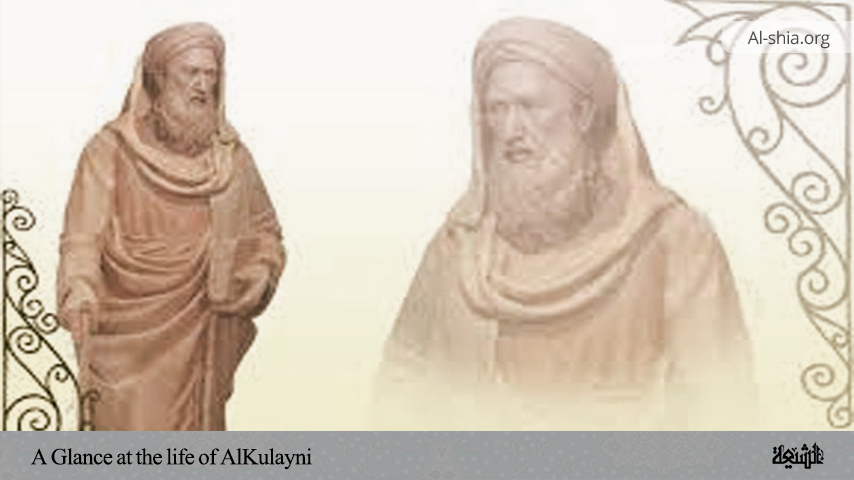In this part of the article “Cultural Relations between Christianity and Shia Islam”, we shall continue with the cultural relations between Christianity and Shia Islam.
8) Divine Attributes: Some of the Mutakallimun (Ashariah) are of the view that Divine Attributes are like the persons in the Christian doctrine of Trinity.
For they believe that Divine Attributes are distinct beings separate from the Divine Essence and are eternal as well.
Yet, other Mutakallimun (Mutazilah) and those who followed the School of Ahl al-Bayt denied the eternity of the Quran and by meticulous philosophical arguments, so that not to be entrapped into the embodiment and incarnation of Christianity.
Of course, they believe in the eternity of Divine Attributes, not as distinct beings, but as identical with Divine Essence and deny any polytheism.
Thus, they are free from any shirk. These scholars of Kalam are of the view that to believe in eternal distinct Divine Attributes would lead to a certain dilemma that Christians face by believing in Trinity.
To be eternal and at the same time be distinct from the Divine Essence would result in a belief in many eternal beings which impair Divine Unity (Tawhid), as al- Shaykh al-Mufid held that such an idea would lead to belief in many eternal beings. (1)
9) In order to believe in eternal and distinct Divine Attributes and at the same time keep on believing in Divine Unity and discard the ascription of any unreal attributes to God, al-Shaykh al-Mufid propounded the following rational matters:
“If God is ascribed to the attributes of the living, the powerful, the knowing. The such attributes contain rational matters that is, they are not identical with Divine Essence.”(2)
By the meanings of such matters, he means that attributes are not distinct from the ontological point of view, but are distinct from the epistemological viewpoint, as he says:
“By rational matters I mean those matters which are rational in mind not concrete and objective.” (3)
With deep insight into al-Mufids views, one can infer that by Maqul, he means something that later on was called by Sabziwari as the primacy of being over quiddity.
In this regard, Sabziwari says: that being and quiddity are, however, distinct in mind but are identical in the external world. (4)
Similarly, al-Shaykh al-Mufid also held that though attributes are distinct in the mind but are identical on the outside. Apparently, Martin McDermott also maintains that al-Mufids approach was conceptualism. (5)
10) The issue of distinct Divine Attributes while holding the Unity of God was discussed by later Islamic thinkers. Ibn Arabi and Mulla Sadra also like al-Shaykh al-Mufid had a kind of conceptualistic approach toward the Divine Names. Ibn Arabi explicitly denies the existential status of attributes and says:
“What we believe is as relations which in Shariah is called name. Every name bears a meaning different from others. That meaning is predicated on God.
Nazzar who follows Kalam, considers it as an attribute, not a relation … Do names possess existential status? In this regard, there is a debate between Nuzzar.
In our view, everything is clear. They are only relations and names and are conceptual, not objective, and concrete.
Thus, the substance can be divided only by being, not by accidents, attributes and relations.”(6) He further says: “Relations are neither essences nor things. Regarding the reality of relations, one should say that they are nothingness in nature.”(7)
Mulla Sadra commented on the following points on the levels of being: “Nothing can be found which is not available among the Divine Names. Names come into being by Divine Being.
They come into being in the best manner, and owing to His necessary Essence they would be necessary.”(8)
These names are conceptual and simple beings that depend on Necessary Being. And such multiplicity in unity is one of the secrets of the Divine Being. (9)
In some other place, he said:
“Divine Attributes are identical with His Divine Essence, not as Ashariah believe in it. For they believe in the multiplicity of His Attributes which entails a multiplicity of two eternal beings, not as Mutazilah creed also who denied the reality of the attributes.
Yet, while believing in its effects, he considers essence as second to the attributes.”(10) Concluding that Ibn Arabi and Mulla Sadra admit the basis of al-Mufid ideas though they developed it in a broad area, they believe that all created beings are conceptual, and, all creatures possess conceptual entities and like Divine Names they can be called Divine Word.
11) Difference between the development of Islamic Thought and that of the Christian doctrine of the Trinity is considerable. In Islamic philosophy, the inclination was directed towards multiplying the Divine Attributes in a sense to consider all creatures as Divine Attributes.
At the same time, such attributes do not impair Divine Unity. The early Islamic scholars of Kalam were aware of modalism in Trinity and believe that common people’s perception is nothing but innovation.
The theory of modalism is attributed to Sibelius (11), who considers God as a person with three attributes which certain Muslim Sufis also used in their poems.
The modalism approach of the Trinity was strongly discarded in Christian theology. For they believe in a vertical Trinity, that is, father and son, according to which son does not possess perfect divinity.
In refuting the modalism approach towards Trinity, they believe that God not only is three in terms of meaning but is a Triad personality. (12)
According to Mutakallimun, this idea is a kind of polytheism as the Quran says: “Believe therefore in Allah and His Apostle and say not three. Desist, it is better for you; Allah is only One God….” Kendi argued against the doctrine of the Trinity and Christians tried to reply to it. Kendi said:
“Threefold personality cannot be included in the categories of porphyry.” Yahya bin Adi, the well-known Christian learned-man in return replied as: “Such beings are individual substances.”(13)
Mutakallimun of Islam like Ghazzali used the argument of Tamama (an argument in kalam), derived from the Quran to prove the Divine Unity. Ghazzali says that if there were two gods, then if one of them wanted to act, the other one had to favour it or oppose it.
In the former case, he would have been a follower which impairs his omnipotence and in the latter cases, one of them would have been weaker which again impairs their omnipotence.
The same argument was applied by Scotus against a kind of Trinity namely the social Trinity.
In such Trinity, God has three distinct personalities. Every one of them possesses certain attributes which suffice for being a god. The argument of Tamano was applied by new Christian scholastics as logical reasoning. (14).
NOTES:
_________________________
1. Awail al-Maqalat, p.50.
2. Ibid., p.58.
3. Awail al-Maqalat, p.58.
4. Sabzawari, Manzumah.
5. McDermott, 1978, p. 134ff.
6. Ibn `Arabi, Futuhat Makkiyah, vol.4, p.294.
7. Ibid., vol.2, p.516.
8. Al-Hikmat al-`Ushi`ah, p.229.
9. Ibid., p.230.
10. Ibid., p.223. 23. Refer to the article: “Influence of Ghazzali on Western Thought”, by Sayyid Mustafa Muhaqqiq Damad, Maqalat wa Barrasiha, Number Dai, pp. 45-46.
11. Sabellius.
12. David F., The Modern Theologians, volume Oxford: Basil Blackwell 1989, pp. 195-198.
13. (The Quran 4:171)
14. Quoted from the book: Rationality, Religious and Moral Commitment, by J.W. Right, 1986, pp.2-301. In this book the over-mentioned text is quoted from the book Tract on Dogmatic Theology, which is the translation of, Fi `Usul al-Aqa`id, by Ghazzali.






